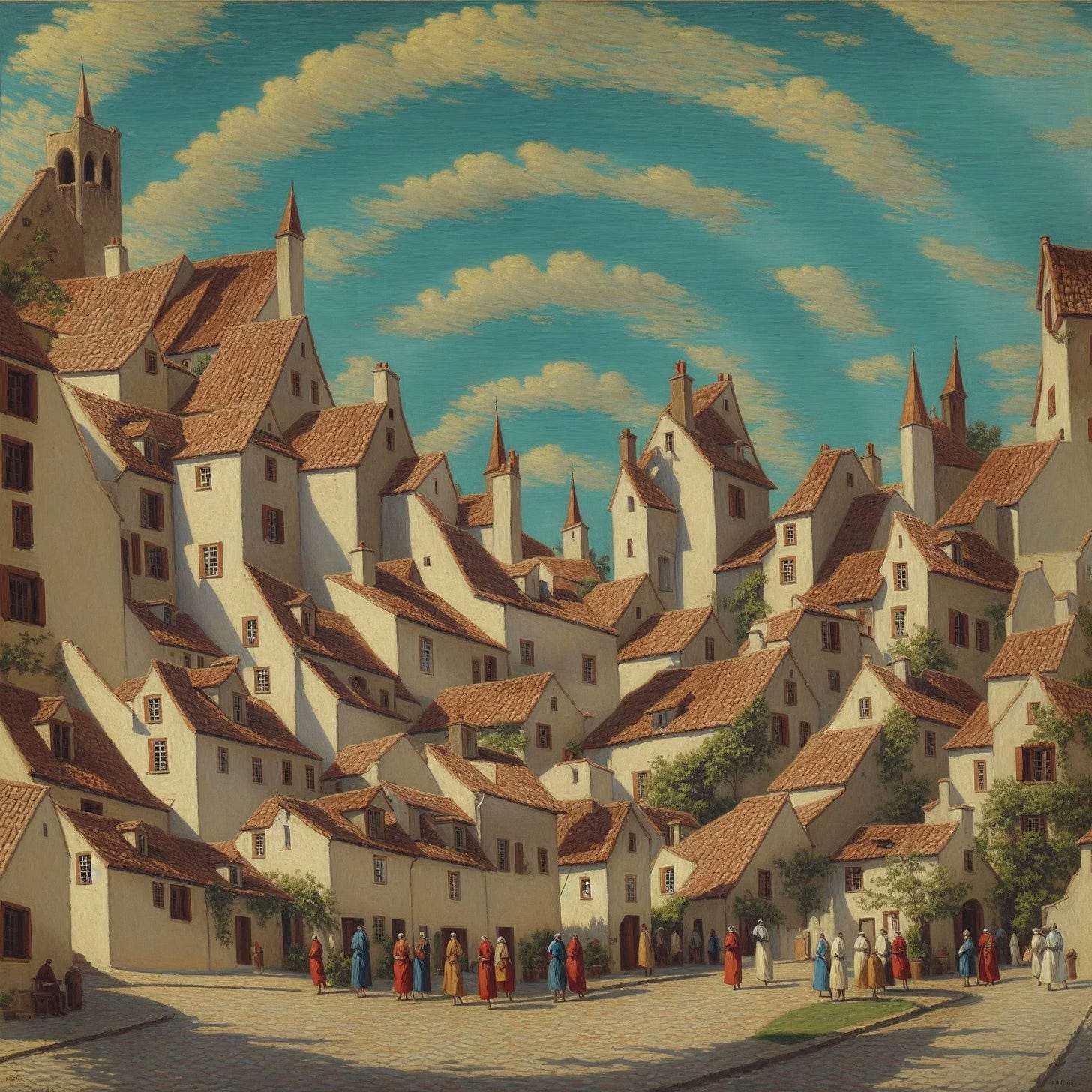Why AI Nerds Praise Ugly AI-Generated Art
On the psychology of AI nerds: Part 5
This is the fifth and final part (paid) of a five-part essay on the psychology of AI nerds. They are intended to be read in order (introduction included in part 1). Here are the previous parts:
AI Nerds Are People Who Like Everything — I. Overexistence (free)
AI Nerds Want Out And They’re Taking Us With Them — II. Escapism (paid)
How AI Nerds Became the Perfect Political Puppets — III. Apoliticality (paid)
AI Nerds Can’t Stand What They Can’t Understand — IV. Legibility (paid)
V. Meta-beauty

I will end this essay on a lighter note by circling back to the beginning. As Sam Kriss says and I defended in the first part, nerds—and this is common to the pre- and post-AI types—don’t have “taste” at the object level; they don’t discern beauty between things (that is, in part, why they’d praise the above AI-generated spiral-based painting as much as they’d praise a Picasso, Dali, or Goya). It’s also why, as we saw in the third part, they like making swords and plowshares equally (metaphorically speaking).
It is, in another sense, why they like things in hyper-abundance, because they’re insensitive to scarcity playing a role in the aesthetic value people ascribe to things; it’s not that scarcity itself literally makes things more beautiful (that only makes sense in economic terms), but it makes the beauty of the thing that’s scarce stand out when it’s revealed. Rarity emphasizes the perception of beauty in the eye of the beholder.
However, Kriss misses an important aspect of AI nerdiness: they have a distinctive aesthetic sense at the meta-level; they find beauty in the mechanisms that enable abundance. A hammer is more beautiful than the flint or the mallet, and, in turn, the lathe and the assembly line far surpass the hammer. Their conception of beauty is not missing, merely cross-dimensional, distinct from what normies understand as beauty.
To them, AI—particularly the generative kind, which is what most normies understand as AI these days—is the most beautiful hyperobject of all, but not so much for what it produces—or even its orderly nature as we saw in the fourth part—but as a symbol of infinite production. That’s what this fifth and final part is about.
3 DAYS LEFT: I’m running a Halloween sale for free subscribers at a 33% discount until November 3rd (Monday). I probably won’t do another one until 2026, so make sure to get yours at the reduced price of $80/year (vs $120/year). You can also get a standard monthly sub.
Keep reading with a 7-day free trial
Subscribe to The Algorithmic Bridge to keep reading this post and get 7 days of free access to the full post archives.

